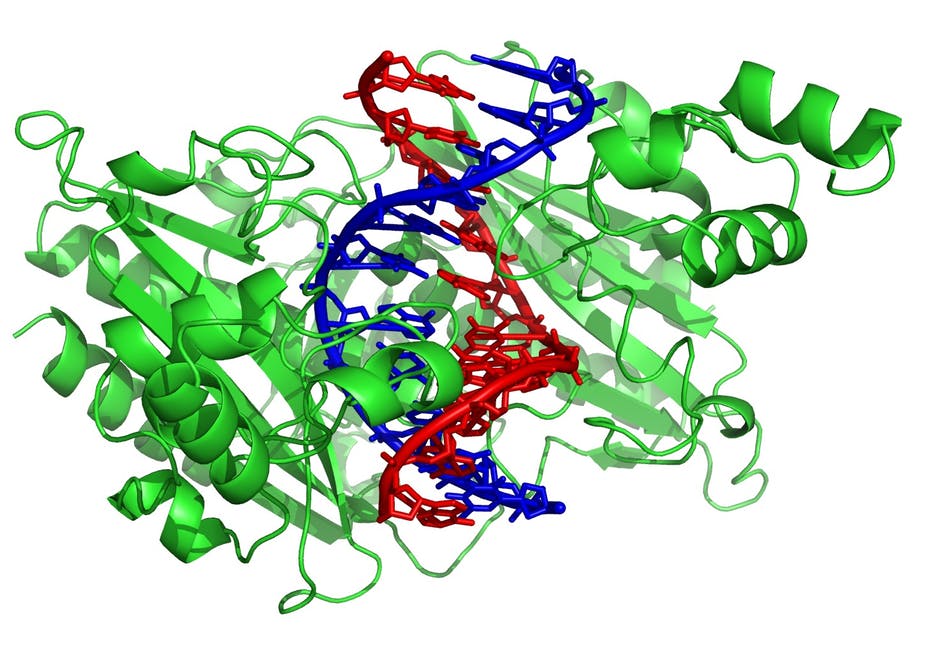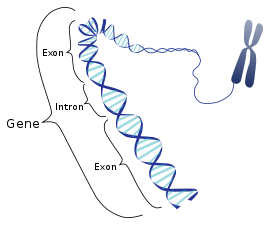Question #3c9ed
1 Answer
It is improbable that an error in copying the DNA could result in a functional or more functional protein.
Explanation:
The information encoded in DNA is for the sequence of the Amino Acids (AA's) in the protein (usually an enzyme). There can be more than one type of error:
1. Mismatch.
Let 's say a certain codon in the chain reads "AGG" .
This codes for the AA Arginine.
If somehow the codon SHOULD have read "AGU", according to the info in the DNA, then Serine should have been inserted instead.
This can have dramatic consequences for the protein: their activity is dependent on their 3D-structure:
(protein = green, DNA = red/blue)

Replacing one AA with another will alter that 3D-structure. It will usually render the enzyme inactive, or at least less efficient depending WHERE the mutation takes place.
2 & 3. Frame Error.
I have combined these two, as they essentially are the same:
2: .
It can happen that RNA Polymerase simply forgets to insert a base in the sequence of the mRNA transcript, or somehow inserts an extra one. In both cases a Frame Shift will occur: from that point on all codons will have changed identity:

The insertion of an extra G will change the identity of the AA's to be incorporated, and in this case introduces a premature STOP-Codon...
Needless to say this results in a totally useless protein molecule....
Usually a strand of mRNA is not used for Translation (into Protein) straight away: it will be modified by the elimination of Introns: non-coding regions that lie between the coding regions ( "Exons")
The Introns will be excised before translation takes place, and cutting one or two extra bases out will also result in frame shift.
Image of a simple gen with one intron:

Are these errors lethal? No.
mRNA doesn't live long in the cell: once it has done its function, it will (and should) be broken down. If it would remain, enzyme translation would keep on going, and this usually is undesirable.
Apart from that, more than one mRNA-copy is made at the same time, so if a protein is needed, you are not in the least totally dependent on the produced erroneous copy. If there is inhibitive (suppressive) feedback by the protein, i.e . the presence of the enzyme suppresses the expression of its own gene, a production-error protein would probably be incapable of this inhibiting action anyway....
the mRNA itself can suppress gene activity as well (depends on the gene) but that is outside the scope of this question.
Going back to the question, this relates to a transcriiption error. It is assumed therefore that the info in the DNA is correct.
So, new copies of the mRNA will not contain the same errror...
Understanding how the structure of amino acids determined by the DNA makes the idea that errors in the copying of DNA could result in a more punctual protein or the origin of an enzyme.
PS: tried to accredit the image of the 3d-structure, but none available....

